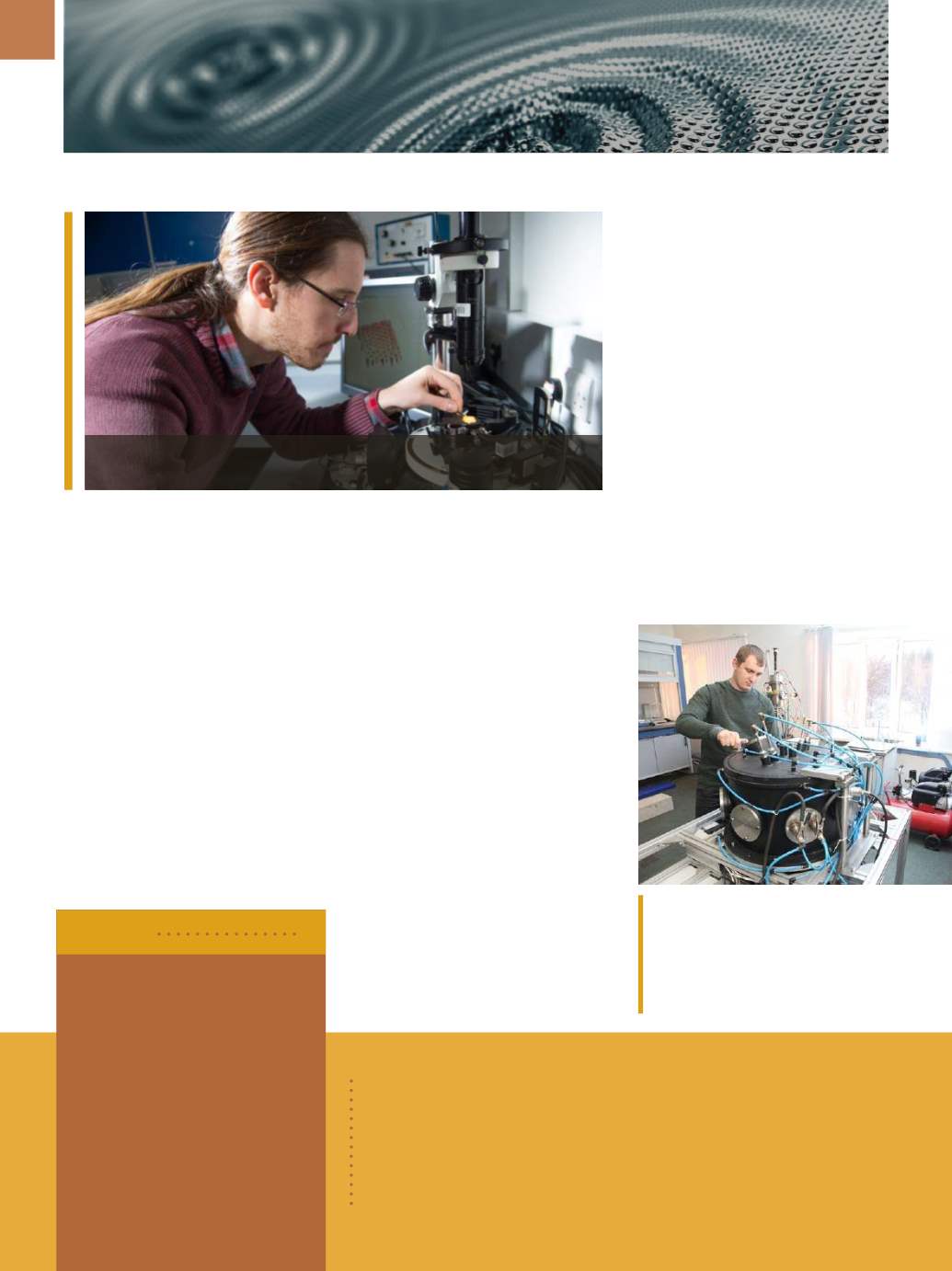

A D V A N C E D M A T E R I A L S & P R O C E S S E S | M A Y 2 0 1 6
1 8
SURFACE ENGINEERING
NANOTECH RESEARCH
COULD IMPROVE EVERYDAY
ESSENTIALS
Researchers from the Universi-
ty of Surrey, UK, in collaboration with
the Université Claude Bernard, France,
used computer simulation and materi-
als experiments to show how coatings
with different sized particles, such as
paints, spontaneously form two layers
as they dry. This mechanism can be
used to independently control proper-
ties at the top and bottom of coatings,
which could help increase performance
across industries as diverse as beauty
and pharmaceuticals.
“When coatings such as paint,
ink, or even outer layers on tablets are
made, they work by spreading a liquid
containing solid particles onto a sur-
face, and allowing the liquid to evap-
orate. This is nothing new, but what is
exciting is that we’ve shown that during
evaporation, the small particles push
away the larger ones, remaining at the
top surface whilst the larger ones are
pushed to bottom,” says Andrea Fortini
of the University of Surrey.
The team is continuing research
to understand how to control the width
of the layer by changing the type and
amount of small particles in the coat-
ing and explore their use in industrial
products such as paints, inks, and ad-
hesives.
For more information: Andrea
Fortini, 01483 68 6856,
a.fortini@surrey. ac.uk,
www.surrey.ac.uk.
DIAMOND COATINGS ENHANCE
IRON AND STEEL TOOLS
Due to their hardness, diamond
coatings are widely used in the manu-
facture of cutting tools. They are used
Nacho Martín-Fabiani prepares a paint sample for analysis with an atomic force
microscope. Courtesy of University of Surrey.
TPU scientists created coverings for
next-generation cutting tools that are
not only durable, but also suitable for the
treatment of most materials. The technol-
ogy produces diamond and cubic boron
nitride thin films from a gas mixture.
to treat some metal alloys, ceramics,
and carbon composites, but are ineffec-
tive for iron and steel because at high
temperatures, carbon interacts with
these metals and gradually collapses.
To resolve this problem, scientists at
Tomsk Polytechnic University, Russia,
developed a composite coating based
on diamond and cubic boron nitride,
the hardest known material.
Coatings were obtained from gas
by means of plasma. Researchers have
already developed a diamond sputter-
ing technology from a mixture of meth-
ane and hydrogen. Cubic boron nitride
can also be obtained from gas, enabling
the scientists to cover a carbide tool
with thin films, increasing its strength.
tpu.ru/en.PPG Industries
completed a
$7.8 million investment at its
Coatings Innovation Center
in
Allison Park, Pa., just 20 minutes
from its global headquarters in
Pittsburgh. Upgrades to the facility
include increased laboratory and
testing space and upgraded equip-
ment that improves the technical
capabilities of the company’s prima-
ry research and development facility
for paint and coatings.
ppg.com.
BRIEFS
The
National Science Foundation,
Arlington, Va., awarded a $746,366
grant to
WattGlass LLC
to further develop the
University of Arkansas’
(Fayetteville) patent-pending coating technology that makes glass anti-
reflective, self-cleaning, and highly transparent. The nanoparticle-based
coating will increase the efficiency of solar panels and reduce cleaning
and maintenance costs, according to company sources
. nsf.gov, wattglass.com.


















